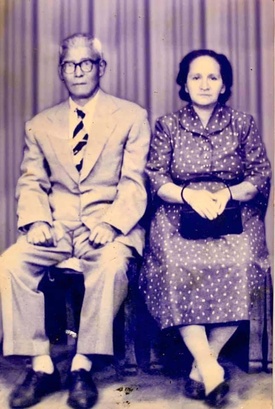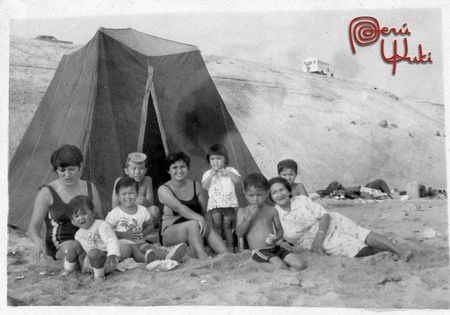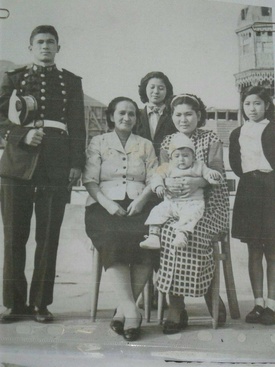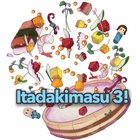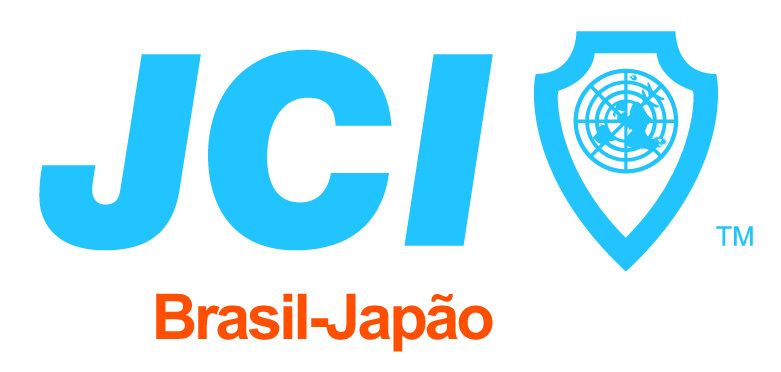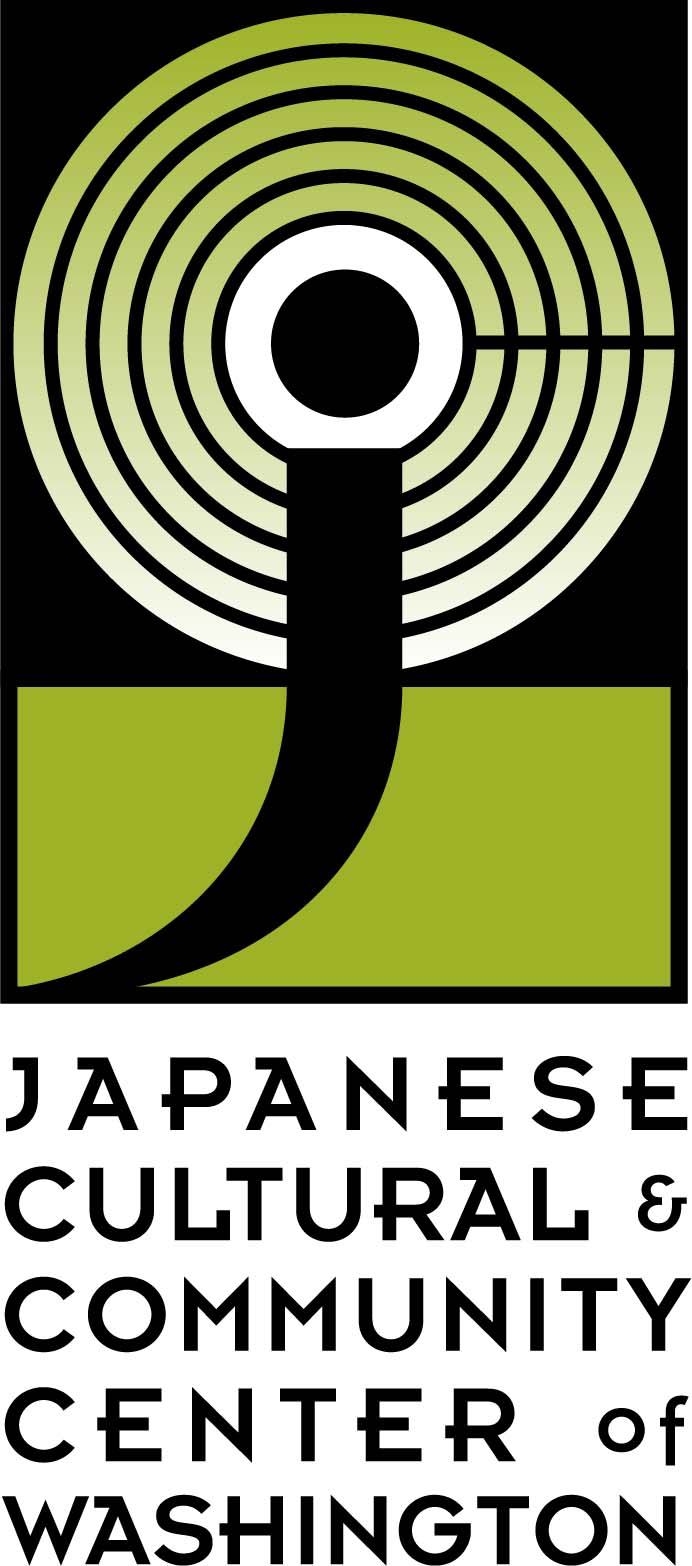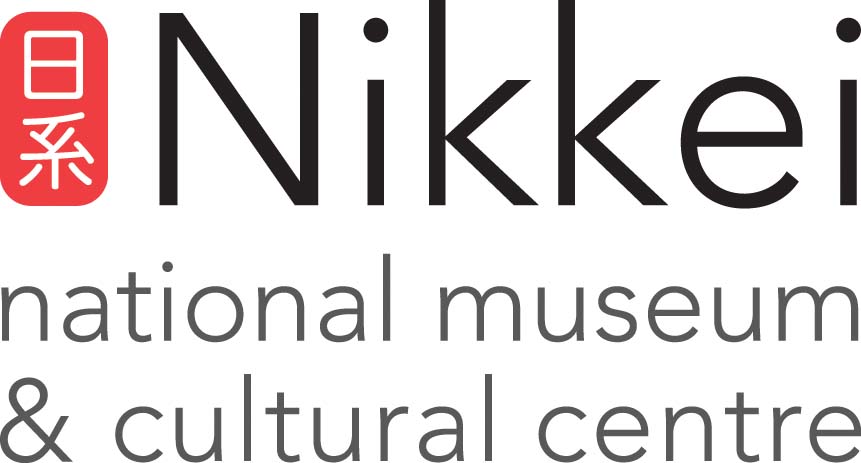It's September and I want to tell you a very personal story about a perfect dish for these hot times of year. It is Creole sashimi . A dish that brings back many childhood memories, anecdotes about my father, my Oji (grandfather in Japanese), my Japanese family, etc.
Sashimi is a Japanese dish prepared with finely cut raw fish and/or shellfish. The word Sashimi in Japanese refers to “tasting an ingredient for itself.” The protein is served with a sauce (usually soy, which is salty, with wasabi , or citrus ponzu sauce) and a simple topping such as grated daikon radish.
* * * * *
The first Japanese immigrants arrived more or less 122 years ago in Peru to the port of Callao and Cerro Azul in Cañete, where my uncle Jose Isao Nakandakari Kanashiro became mayor and was later invited by Emperor Hirohito of Japan with a delegation of Nikkeis. highlights. Later my father would also be invited to Tokyo and Okinawa to see the land of his parents, my grandparents.
When the first Japanese immigrants arrived in Peru, they brought their customs to their new homeland, but as the phrase says “Wherever you go, do what you see” the Japanese began to adapt to their new homeland. Just as I did many years later when I went to Japan to work and study and then to the US where I arrived to stay and put down roots.
We immigrants bring our customs with us, especially our way of eating and preparing our food. Everywhere I went I had to make my ceviches, lomo saltados, huancaína cream, red and stewed noodles, cau-cau and dried with beans, and almost always with patience and good humor trying to substitute the ingredients that we couldn't find in the markets, such as yellow chili or panca, red onion, rocoto, etc.
Now with the Internet the world is getting smaller and what once seemed impossible is now the common rule. I imagine my grandparents trying to look for oshoyu, wasabi or nori . I know that they had to figure out how to replace their products from far away Japan with local ones. And thus, my friends, the Peruvian and Japanese fusion called today Nikkei cuisine was born.
The term Nikkei is the most appropriate term to refer to the Japanese and their descendants.
I don't know when or how the traditional Peruvian ceviche, which was marinated and cooked in lemon juice for hours or overnight in some cases, changed to the Peruvian ceviche we know today, which is prepared, mixed and served. almost immediately, valuing, as it should be, the freshness of its elements. Undoubtedly thanks to the influence of some Japanese man or woman who convinced some Peruvian man or woman that the best way to appreciate fish was not to cook it in acid but rather to enjoy it fresh. That's when Peruvian ceviche separates itself from its Latin American brothers and becomes unique.
The same thing happened with sashimi . Perhaps it was that the Japanese, upon tasting the ceviche, liked the acidity of the lemon so much that he changed the recipe, or perhaps it was that to please the palate of some beautiful Peruvian not used to eating raw fish and soy sauce, he modified the recipe... I don't know, nor will I ever know, but this is how Creole sashimi must have been born.
When summer was almost over, the Nikkeien community in Lima, Peru, organized a festival called "El Paseo del Sonjin " to the farthest beach, cove, almost inaccessible and least known that existed.
Which?
Well, kilometer 40 south, "El Silencio" beach....
Each family brought food to share with everyone and I mean everyone since we occupied almost the entire beach.
My mom (her native Arequipa) always brought ocopa, but I loved sushis and onigiri , especially one that was a rice ball, mochigome, filled with pork and miso .
Mmmmmmmmm....what memories!
In those tents and on the sand were my first loves with Nikkei food.
The smells, flavors, textures and stories that will accompany me for the rest of my days. For as long as I can remember, ceviche and sashimi have been at the top of my eating preferences.
I don't remember the day I tried my first sashimi , just as I don't remember my first ceviche, but I do remember the ceviche that marked my life. It was the year 1993, the “Papa stuffed” (is he a person?) set up a small grocery store in front of my house on block 4 of Pedro Venturo, in Higuereta, which did not sell anything. And he had the genius to hire Benito (who had a ceviche kiosk in front of the Continental bank in Córpac) to make ceviches in his store on the weekends. That was a boom and it changed my life.
Benito, after the Pope's store was filled up, moved to a brick and cement kiosk in front of the San Isidro cinema and named it Punto Azul. The rest is history.
The sashimi we ate at home, the one my mom prepared some Sundays when dad asked for it, was the one that mom learned from Oba but mainly from her sisters-in-law: Aunt Tomy and Aunt Sakae. Always made of raw fish fillets cut very finely, and always accompanied with mochigome rice, kiuri, daikon, slices of rocoto and decorated with lettuce leaves around the platter like any other Creole food. Along with a sauce made from soy sauce and lemon juice, which was what brought everything together.
A little toy that was the mix and fusion of what I would later know as the essence of Nikkei cuisine. A flirtation between ceviche and traditional sashimi . The truth is, that sashimi was the only one I knew until many years later when dad was able to take us to eat at a Japanese restaurant. For me the only sashimi , the Creole one, was the one that was eaten at home or at family gatherings (on my dad's side, that is, the Nakandakari. Well, on my mom's side, the Muñoz, it was the Arequipa family).
Until I tried the sashimi that Mr. Chita, Don Enrique Otani , made. The youngest of the famous Otani brothers of the “Lobo de Mar” cevicherías and restaurants. His restaurant was on Caminos del Inca Avenue.
Don Enrique's sashimi was unmatched, sweet, salty, sour, spicy, full of umami . Sometimes I would accompany my dad to the restaurant because my father had a very good friendship with Uncle Chita and they would meet there to meet their friends (a curious fact that I learned in my childhood, is that all of us from the “eye” were of some kind. uncles or cousins, a custom that I continue to this day) and I always took advantage of ordering a sashimi and a seafood.
My father, General PIP(r) Juan Hiroshi Nakandakari Kanashiro, loved to eat sashimi in a very particular way, he made a wrap using a lettuce leaf, rice, fish, turnip, cucumber and sashimi sauce. He wrapped it and ate it with an almost sinful passion.
And he told me that my Oji never liked him doing that and punished him when he did it. I suppose that as an adult, and without anyone complaining to him, he did it with a repressed satisfaction of years. Just like now I allow myself some vices like sleeping late. Now my youngest son, Hiroshi, eats like his Oji and does the Hiroshi mischief.
My father had a very special relationship with his father, my Oji . Don Kotaro Nakandakari originally from Tamagusuku-son in Okinawa. My father was the youngest of the male brothers and as my grandparents' economic situation improved a lot (my Oba had a small shop called “Media luna” at the old bus stop in Plaza de Acho and my Oji had a small hair salon) and They were able to enroll my father at the Leoncio Prado Military School (XIV).
My dad says that Oji would receive him on the weekends, super proud to see the youngest of his children wearing the uniform with gold buttons. Using the broom as a weapon, I taught him the kata familiar to our ancestors in distant Okinawa. And after a couple of drinks and listening to shamisen, he remembered with nostalgia and sadness his home in Tamagusuku and his house that looked so much like the photos of Machu Picchu that he had hanging on the walls of the hair salon.
And so, my dear tomodachi, here I have tried to tell you my humble story with Creole sashimi that influenced my life so much that I ended up being a chef proud of my samurai heritage as a characata and with a very clear mission because Peru is a great brand and we are all invited to be its ambassadors.
* * * * *
Here is the recipe for one of the emblematic dishes that influenced my life, my tastes and way of cooking.
Creole sashimi
Preparation time: 15 minutes
"For 2 persons"
- 1 pound fresh sushi or sashimi grade fish fillet
- ½ pound cooked seafood
- 1 kiuri cucumber
- 1 greenleaf lettuce
- 1 white radish or daikon turnip
《For the sauce》
- 4 oz of soy sauce, oshoyu or sillao
- 4 oz freshly squeezed lime juice
- 1 tsp sugar
- ½ tsp of Salt
- ½ tsp Ajinomoto
- 2 oz fresh ginger/kion
- 1 habanero or rocoto chile.
"Preparation"
You can use the fish you want, but it is best to use a sushi or sashimi grade fish, this means that it has undergone special frozen handling (at super low temperatures -30°F to avoid the risk of parasites) and thawed.
The secret to cutting sashimi for fish that I learned in school in Tokyo is to have a very sharp knife and always cut against the natural grain of the meat. The thickness of the cut depends on each person's taste, personally I like to cut it very thinly as for onigiri .
Cut the fish into thin slices and set aside.
The kiuri receives a special treatment that my Oba taught me to remove the natural bitterness, and that is that the ends of the cucumber are cut off and rubbed vigorously with the same caps until they give off a kind of drool, this according to my Obashan and all generations. Before her on Okinawa they did. Will it be true? I don't know but in honor of her and respecting the tradition I do it and I have already taught it to my children and everyone who listens to me.
The daikon is peeled and washed well. In the past it was cut as finely as possible, almost like hair. Now I use a small manual machine that cuts the turnip like noodles. Reserve.
Peel the ginger and chop it very finely, set aside.
In a bowl, mix the lemon juice, soy sauce, sugar, salt and ajinomoto. Add the chopped ginger and let it marinate for a few hours until the ginger flavor infuses into the sauce. If you like spicy like I do, add a couple of slices of the habanero chili or if you're lucky and get fresh rocoto, do it right before serving. Strain and reserve.
On a large, flat plate, place a leaf of greenleaf lettuce, make a bed with the daikon and on top of them a layer of cucumber slices. Place the fish slices in a fan shape. You can decorate it as your imagination flies, slices of rocoto, fennel leaves, parsley, cilantro, etc. There are no rules in the kitchen.
I always present it with an owan of unsalted rice, ohashi (chopsticks) and a small dish for the sauce.
ADVANTAGE!!!!!!
© 2022 Yuki Nakandakari



